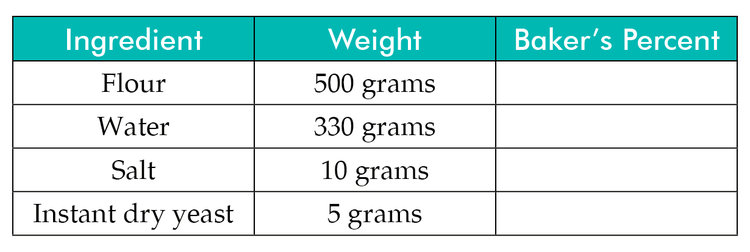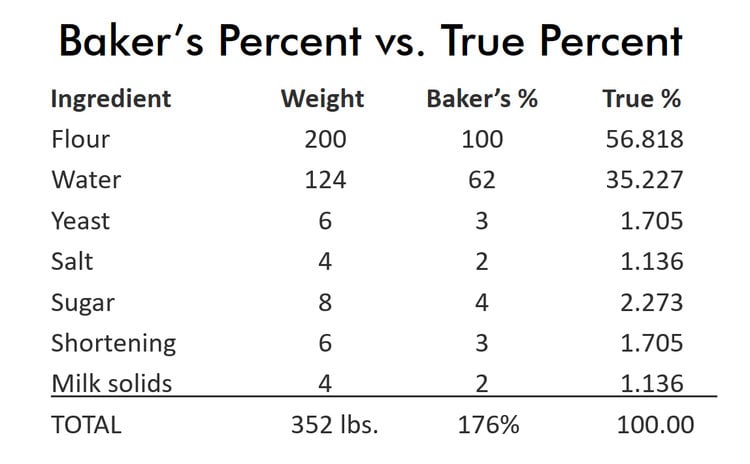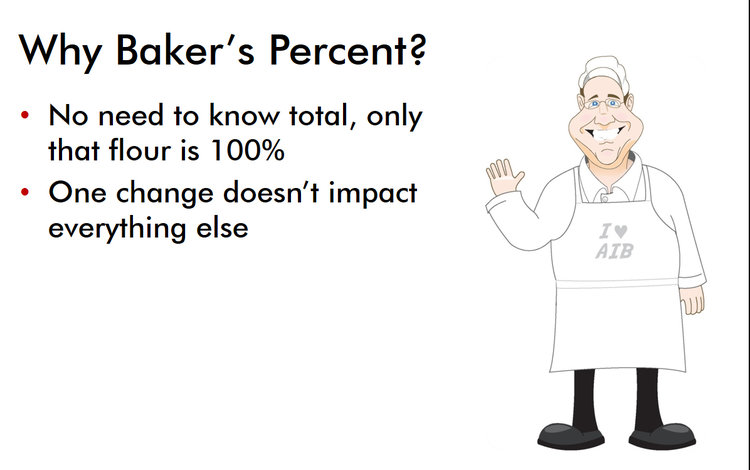The Nuances of Baker's Math
Scaling up from a written recipe can present quite a number of mathematical challenges, which is the exact reason why professional bakers use a separate method all their own. In fact, in the baking and food processing industries, the word formula or formulation is used instead of recipe, which is commonly used in food service, homes, and retail establishments. Baker’s math is the most effective and simplest method used to calculate amounts of ingredients needed in a formula, based on total flour weight being set equal to 100%. Most bakers understand when ingredients change that formulas need to be adjusted to ensure a quality product. Recalculations are created using baker’s math and sometimes adjustments need to be made on the production floor.
The advantages of using baker’s math include:
- Common language between bakers
- Ability to troubleshoot
- Problem solve quickly in the production environment
- Consistency of results
- Flexibility to change one ingredient and keep the rest of the formula constant
Over the years, baker’s math has become an acquired skill to Craig Koontz. Koontz, a 16 year veteran of the baking industry is a Pilot Plant Technologist at AIB International. He instructs the baker’s math components of the Baking Science and Technology resident course, Baking Foundations seminars, and private training.
“Typically, I like to explain baker’s math in a very visual way.” Koontz said. “I usually show a graphic that explains how the ingredient weight is divided by the total flour weight and then I slowly add in numbers. To wrap up, I test seminar attendees with a practice exercise.”



Koontz observes a lot of seminar attendees and one of the biggest challenges he finds is new bakers have issues switching from foundational mathematics to baker’s math. Baker’s math contradicts the normal concept of percentages in that it totals more than 100 percent. It’s a new concept and baker’s math redefines what is common to industry novices. Among the other challenges seminar attendees face is adding another mathematical technique called, true percent. True percentages are widely used throughout the food industry in multi-component formulas and can be useful in determining cost per ingredient. To find true percent you have to know the weight of each ingredient, not just the weight of the flour. This technique is also used in calculating the cost of each ingredient in a formula. Divide each ingredient weight by the total weight of all the ingredients. This will give the percent of each ingredient based on the total formula weight.


Informative tips from Koontz. For more tips in baker’s math or to learn more from Koontz, AIB International's online Baker’s Math and Science course covers essential math, biology, chemistry, and physics topics that affect bakery production. Enrolling in this self-paced program certainly beats having to scour the Internet to learn basic methods of baking.

